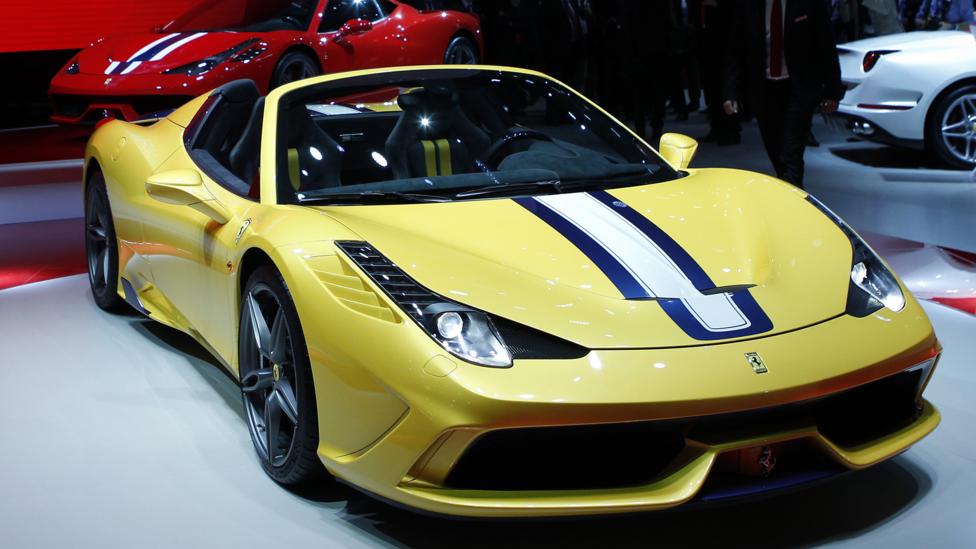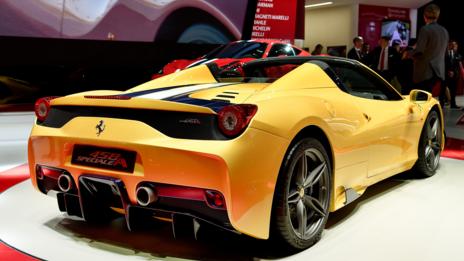New VW Passat, The ins and outs
The new VW Passat estate, at the Paris car show.
Only diesel versions of the eighth-generation Volkswagen Passat will be available in the UK and ROI at launch.
The eighth-generation Volkswagen Passat saloon and estate, which will cost upwards of €28,365, have made their public debut at the Paris motor show.
The new Passat aims to reach beyond traditional mid-class rivals, such as the Ford Mondeo and Vauxhall Insignia, in a bid to lay challenge to more upmarket offerings including the BMW 3-series and Mercedes-Benz C-class.
The saloon and estate models will be followed by a successor to the Alltrack - due in July next year - and a plug-in hybrid GTE version in October 2015. A third-generation CC will also join the range by the end of next year.
The new Passat is incrementally smaller in places than before but, thanks to the adoption of Volkswagen’s highly flexible MQB platform structure as used in the latest Golf, it is both roomier and more practical than the model it replaces.
At 4767mm in length, 1832mm in width and 1456mm in height, the new Passat is 2mm shorter, 12mm wider and 6mm lower than its predecessor, which originally debuted in 2005 as the sixth-generation model and was subsequently heavily facelifted in 2010 to create the seventh generation model, in saloon guise.
Underpinning the new Volkswagen is a chassis featuring a 79mm longer wheelbase, at 2791mm. It also adopts tracks that are 31mm wider up front and 14mm wider at the rear at 1584mm and 1568mm.
In combination with a new range of petrol and diesel engines – all lighter than their predecessors – the Passat is consequently notably more efficient than before.
The most economical of the launch models, the Passat 2.0 TDI BMTI, is claimed to average 68.9mpg and emit 106g/km of CO2.
Volkswagen's chairman, Martin Winterkorn, revealed the definitive production version of the new Passat at the company's advanced design studio in Potsdam, Germany, earlier this summer. It appears a good deal less rakish than an early batch of official sketches had suggested but builds on the edgy look of its predecessor, albeit with flatter profile aimed at provided it with added visual length.
“It is designed to be a premium car without premium cost and it is designed to be eye-catching without envy," said Winterkorn. “The new Passat also offers more value for money, because it transfers technologies and features into the mid-range segment, which are normally limited to up-market cars.”
The conspicuously unadorned exterior styling continues the clean and unembellished design language evident on other recent Volkswagen models. It provides the new car with what Volkswagen design boss, Walter d’Silva, describes as a technical inspired appearance that is characterized by short overhangs, subtle crease lines within the body, thin panel gaps and a minimum of detailing.
The technical link is further enforced by distinctive LED tail lamps, which are standard across the range. The headlamps feature either a halogen or LED main beam function, depending on the model. Dynamic Light Assist, which automatically adjusts the high beam without dazzling on-coming traffic, is available among a long list of options.
While its exterior styling reflects a traditionally evolutionary approach, the interior of the new Passat represents a significant break over the old model. In keeping with Volkswagen efforts to provide its new mid-range model with a more upmarket positioning, it receives a stylish new dashboard facia and associated trims that boast higher quality materials than those of the old Passat.
Despite the reduction in external dimensions, Volkswagen claims the eighth-generation Passat possesses greater leg-, head- and shoulder room than the seventh-generation model, both front and rear.
The new Passat saloon R-Line
Saloon versions offer up 586-litre boots, 21 litres more than previously, while the estates boast an additional 47 litres, totalling 650 litres. This can be extended to a capacious 1780 litres when the split fold rear seats are folded away.
In place of standard analogue instruments, buyers will be able to option the new car with a configurable 12.3-inch TFT colour monitor that goes under the name Active Info Display. That option will be available later in 2015.
In another first, the new Volkswagen also gains an optional head up display unit that uses a separate glass panel mounted within the top of the dashboard to project relevant information into the driver’s line of sight, such as speed, distance travelled and the revs. The Passat also receives the latest Modular Infotainment System options, including Volkswagen’s Car-Net remote application for in-car connectivity.
Central to the Passat’s premium aspirations is a range of new radar and/or camera based features. Volkswagen has confirmed the new car will offer upgraded versions of the 360 degree Area View and Park Assist functions – the latter allowing the car to automatically park itself forwards into perpendicular spaces. A new Trailer Assist feature also provides assistance when reversing with a trailer for more precise parking.
Among a long list of safety technology included either as standard or optional is Side Assist with Rear Traffic Alert, which warns of traffic in your blind spot; Traffic Jam Assist, which automatically accelerates and slow the car in heavy traffic up to a predetermined speed.
Also offered is Emergency Assist, which can potentially stop the car when the driver is injured or incapacitated, and the latest generation of Volkswagen’s Front Assist system with City Emergency Braking – which optionally combines both radar and camera sensors to add pedestrian detection. VW's standard five trim levels, dubbed S, SE, SE Business, GT and R-Line will be available.
The new Passat comes with a wide range of new or upgraded four-cylinder direct injection petrol and common rail diesel engines – all complying with EU6 emission standards. The lack of sales of petrol versions of the seventh generation Passat in the UK and Ireland is behind a decision to import only diesel versions of the eighth generation.
The engines are mated to either a six-speed manual or seven-speed dual clutch gearbox with automatic stop/start and brake energy recuperation functions. Alongside standard front wheel drive, selected engines will also offer the choice of either standard or optional 4Motion four-wheel drive via a Haldex multi-plate clutch.
Diesel options include a trio of 2.0-litre units in 148bhp, 187bhp and twin-turbocharged 237bhp guises. The former offers combined consumption of 68.9mpg and CO2 emissions of 106g/km, while the latter, which possesses a solid 369lb ft of torque at 1750rpm and will be sold exclusively in 4Motion four-wheel drive guise, provides 0-62mph acceleration in 6.1sec and a 149mph top speed.
In June next year Volkswagen plans to introduce an even more economical 1.6-litre four-cylinder common rail diesel engine to the line-up, under its BlueMotion banner. With 118bhp, it is claimed to provide the new Passat with an average consumption of 78mpg with CO2 emissions of 95g/km.
The petrol line-up, not planned for the UK and Ireland, consists of three different engines. It kicks off with a 1.4 litre with either 123bhp or in combination with Volkswagen’s Active Cylinder Technology that closes down the middle two cylinders on part throttle loads for added fuel savings 148bhp. Also available shortly after launch will be a 1.8-litre with 177bhp as well as a 2.0 litre with 216bhp and 276bhp.
Volkswagen won’t be drawn on further engines options, although the appearance of a new turbocharged 3.0-litre V6 engine boasting a 15-degree cylinder bank angle in recent concept cars from the German manufacturer suggests the Passat may be in line to receive a new-generation VR6 unit. This would serve as part of the company's efforts to take it further up-market from its current positioning.
“There is a lot of potential in the VR6 engine. We are continuing to develop it,” said Volkswagen’s head of petrol engine development, Fritz Eichler at the unveiling of the new Passat. Since its introduction in 1973 some 22 million Passats have rolled from Volkswagen production lines.
Prices for the new Passat saloon. start at €28,355 for a 1.6-litre TDI model in entry-level S trim, rising to €45,301 for a top-spec 2.0-litre BiTDI SCR model in R-Line specification. Prices for the estate start at €30,396, and rise to €47,277 . First deliveries are expected in January of next year.










